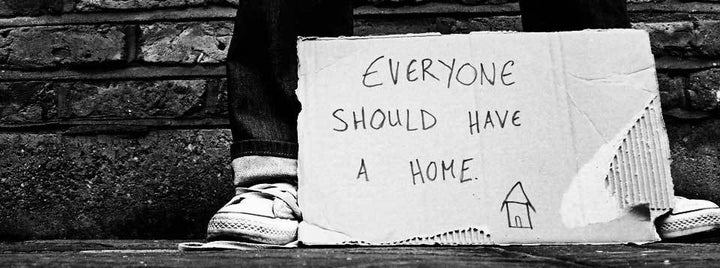
Last week, communities across the country began conducting “counts” of their homeless populations, an effort most will wrap up this week. The results will be published later this year in a report assessing the state of homelessness in America—including whether it is going up or down.
The problem is, the “counts” won’t tell us that.
A lot of energy goes into the counts, which are federally mandated, and volunteers come out in force to help. This is a good thing: it shows how much people care about their fellow Americans who are without one of the most basic necessities of life: a safe, decent place to live.
The annual count—known as the “point in time” or PIT count—attempts to measure the number of people living in shelters, transitional housing and outdoor locations on a single January night across the United States.
Counting people in shelters or transitional housing is fairly straightforward. Federally funded providers of these services are required to report how many people they serve. If a shelter loses funding and has fewer beds to offer, it will report fewer numbers of people. But that doesn’t mean that homelessness has gone down—just that there is less help available.
Presumably, the other part of the count—known as the “street” count—should capture anyone who is not able to get into shelter or transitional housing. But that part of the count is even more problematic.
The federal mandate is to count individuals and families living in public or private outdoor places “not designed for or ordinarily used as a regular sleeping accommodation for human beings, including a car, park, abandoned building, bus or train station, airport, or camping ground.”
It’s up to each community to devise its own process for carrying out the street count. Most communities simply organize volunteers to fan out and make judgments about who is homeless, after just a brief training session. And despite the broad mandate to count everyone living outside, federal guidelines caution against entering locations that might be unsafe, such as abandoned buildings and alleys—in other words, the very places where homeless people are likely to be.
Local laws and policies can also affect the count. As documented in a recent report, cities are increasingly making it a crime to sleep in public places, driving people further into hiding and making them harder to count.
Methods pioneered in New York City that statistically adjust for the built-in inaccuracies of the “street” count. They should be adopted nationally. Perhaps even more importantly, data must go beyond a single night, and it must capture the broader segment of people affected by the extreme shortage of affordable housing.
While it is billed as a count of the country’s homeless population, the Point in Time count does not include those who are doubled-up or couch surfing because they can’t afford their own place. Nor does it include people in hospitals, mental health or substance abuse centers, jails or prisons with nowhere to go upon release.
Minimizing the numbers and narrowing the definition simply obscures the size and nature of the crisis we are facing—and makes it that much harder to solve. According to a recent report from Harvard’s Joint Center for Housing Studies, low-income households suffer an unprecedented housing cost burden, forcing many to choose between rent and food. Homelessness is in fact the last point on a continuum of housing need.
Currently, our country’s housing policy and laws are terribly out of balance. As noted in the Harvard study, only one in four of those poor enough to be eligible for federal housing assistance actually receive it. Over the past three decades, federal funding has been cut dramatically, shredding this basic part of the social safety net.
Defining homelessness narrowly and understating its size may make it seem more “manageable” and thus more solvable. But it will also drive policy responses that inevitably fail: even if a community succeeds in housing its current homeless population, unless it also addresses the larger need, more people will become homeless. This will simply further the already prevailing—and false—view that homelessness is “intractable,” discouraging efforts to solve it.
To really solve it, we must acknowledge the true nature of the crisis, locate it within the large problem of housing injustice, and build a movement to correct it.
